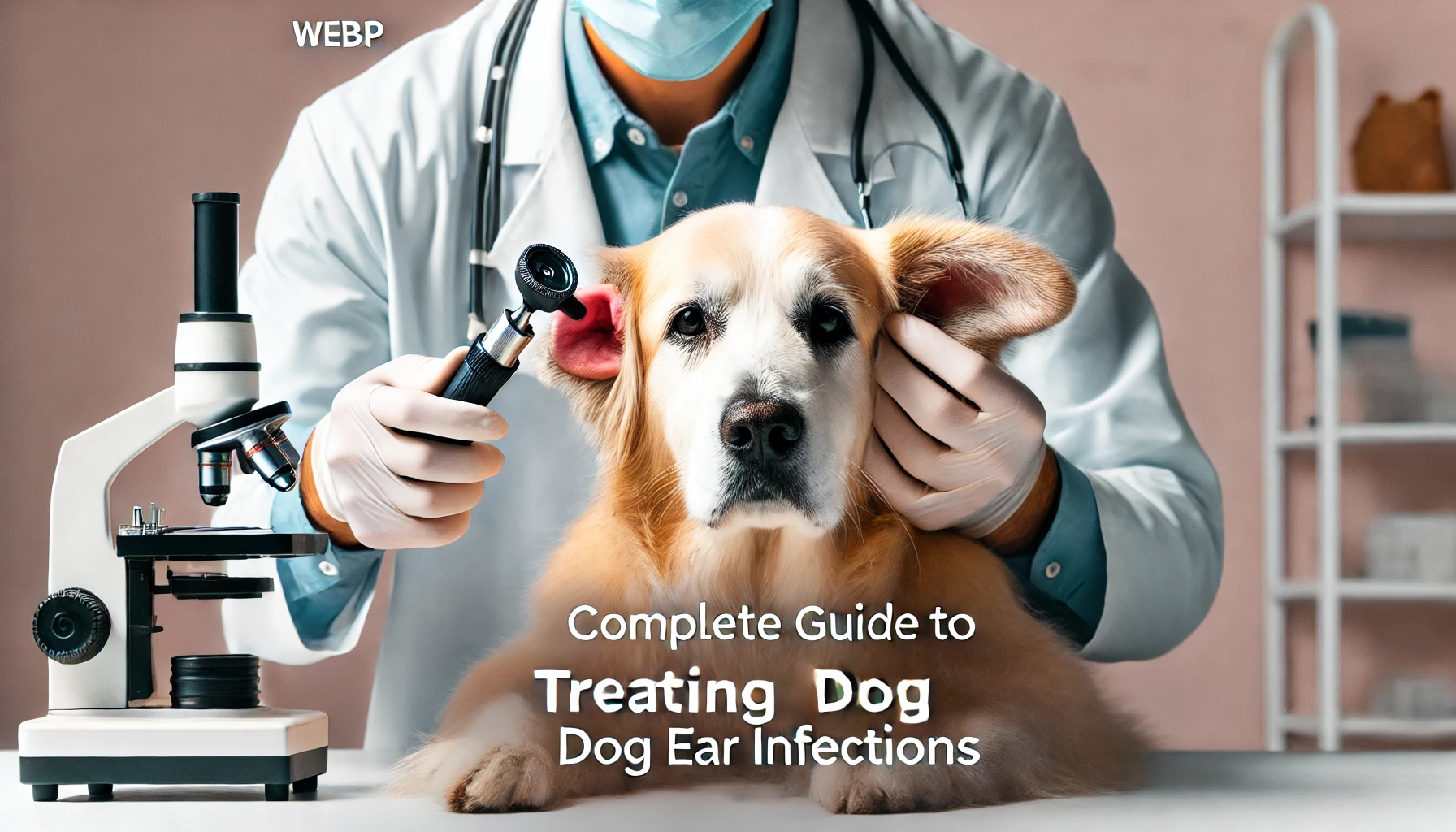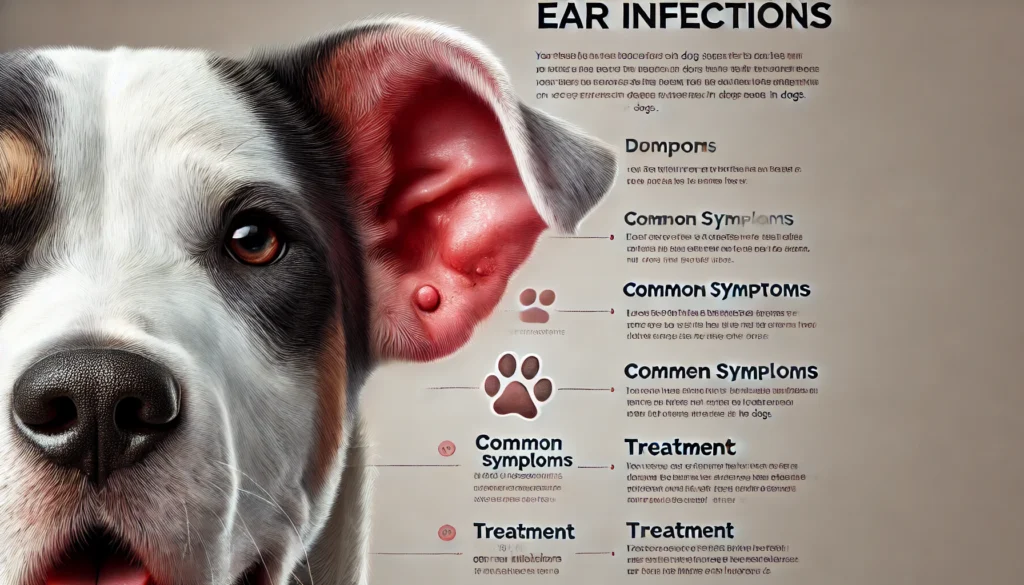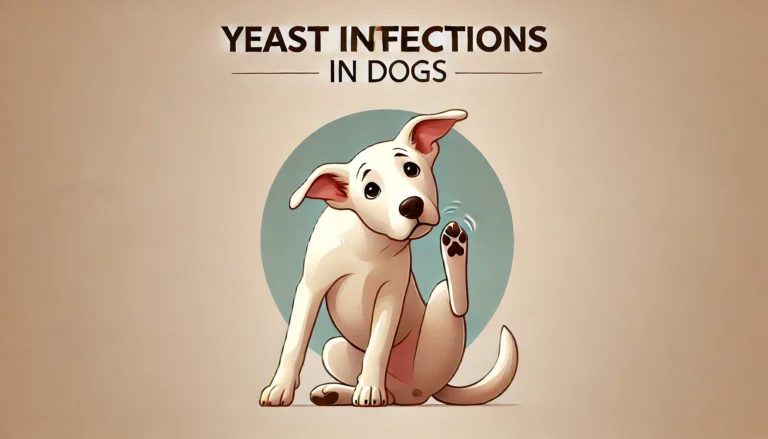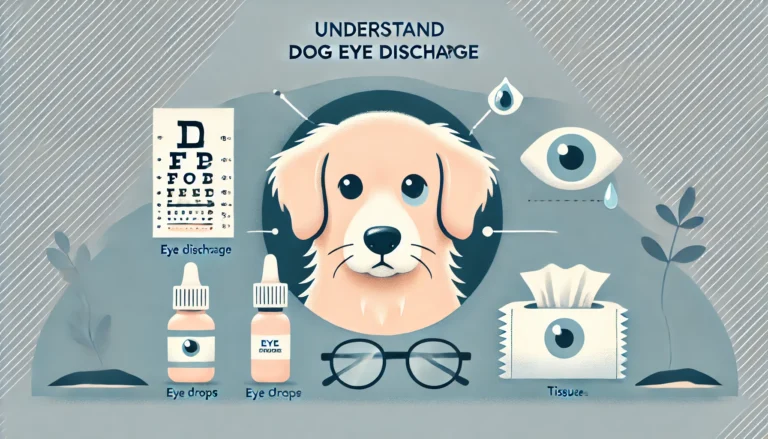Understanding Dog Ear Infections: Causes, Symptoms, Treatment, and Prevention

Fantastic article on Dog Ear Infections
Dog ear infections, or otitis externa, are a prevalent issue among dogs, affecting countless pets each year. These infections can cause discomfort and, if untreated, may lead to more severe health complications. This detailed article will explore everything from the causes and symptoms of ear infections in dogs to the most effective treatments and preventive measures, ensuring your canine companion stays happy and healthy.

What is an Ear Infection in Dogs?
An Dog Ear Infections occurs when the outer ear canal becomes inflamed, often due to a buildup of bacteria, yeast, or both. These infections can be influenced by the dog’s environment, anatomy, and health status. Understanding the nuances of canine ear health, such as distinguishing between a dog ear infection yeast vs. bacterial, is crucial for effective treatment.
Causes of Ear Infections in Dogs
The reasons behind Dog Ear Infections are multifaceted, including:
- Anatomical Factors: Breeds with floppy ears or narrow ear canals, like Basset Hounds and Cocker Spaniels, are more susceptible due to reduced air circulation.
- Moisture: Water that gets trapped in the ear canal from bathing or swimming can create a breeding ground for bacteria and yeast.
- Allergies: Dogs with allergies to food, pollen, or dust might develop ear infections as a secondary symptom.
- Parasites: Ear mites are common culprits, especially in puppies.
- Foreign Bodies: Grass seeds and other debris can become lodged in the ear canal.
- Underlying Health Conditions: Issues like hypothyroidism or autoimmune disorders can predispose dogs to ear infections.
dO YOU KNOW?
Mild cases might only require increased hygiene, including regular cleaning of the affected area with cat-friendly wipes or a mild antiseptic
Symptoms of Dog Ear Infections
Recognizing the signs of an ear infection can help prevent a minor issue from becoming a major problem. Symptoms include:
- Odor: A strong, unpleasant smell emanating from the ears is a telltale sign.
- Discharge: Look for unusual brown, yellow, or bloody discharge.
- Redness or Swelling: Infected ears may appear red and swollen in Dog Ear Infections.
- Behavioral Changes: Dogs may shake their heads, scratch at their affected ear, or become irritable.
- Loss of Balance: If the infection is severe, it might affect your dog’s equilibrium.
Diagnosing Ear Infections in Dogs
Veterinarians typically diagnose ear infections by examining the ear with an otoscope and conducting tests on samples from the ear discharge. This helps determine whether the infection is caused by bacteria, yeast, or both, and guides the choice of treatment.
Treatment Options for Dog Ear Infections
Effective treatment for Dog Ear Infections might include:
- Medicated Ear Cleaners: Cleaning the ears with veterinary-approved solutions can help clear the buildup of wax and debris.
- Topical Medications: These may include antibiotics or antifungals applied directly to the ear.
- Oral Medications: In severe cases, oral antibiotics or anti-inflammatory medications might be necessary.
- Ear Drops: Specific types of ear drops can target bacterial or yeast infections in dogs’ ears.
- Surgery: In chronic cases, surgical intervention may be required to prevent recurrence.
Home Remedies for Dog Ear Infections
While veterinary care is essential, some home remedies can support treatment:
- Vinegar and Water Solution: A mixture of vinegar and water can help clean the ears and restore a healthy pH balance.
- Coconut Oil: Known for its antimicrobial properties, it can soothe the infected area.
- Warm Compresses: Applying a warm cloth to the ear area can reduce discomfort and inflammation.
Preventing Ear Infections in Dogs
Prevention is key to avoiding the recurrence of ear infections:
- Routine Cleaning: Regularly cleaning your dog’s ears helps prevent the accumulation of wax and debris.
- Drying Ears: Always dry your dog’s ears thoroughly after swimming or bathing.
- Diet and Health: Maintain your dog’s overall health with a balanced diet and regular check-ups, which can reduce the risk of ear infections.
Long-Term Management
Chronic ear infections require ongoing management to keep them in check. This may include regular veterinary visits, lifestyle adjustments, and a tailored health plan.
dID YOU KNOW?
If home remedies and cleaners don’t work, it may be time to call in professional cleaners. They have the tools and expertise to remove deep-set cat urine odors, especially in carpets and upholstery.
Conclusion of Dog Ear Infections
Dog ear infections are a significant concern but can be managed effectively with proper care and attention. Understanding the underlying causes and recognizing the early signs can help prevent these infections from becoming a painful ordeal for your furry friend. Regular veterinary care, combined with diligent home monitoring, is crucial to keeping your dog’s ears healthy. Whether it’s identifying the best dog ear infection treatment or using preventive measures to maintain ear health, informed care can make a significant difference in your dog’s quality of life.
Dog Ear Infection Yeast vs. Bacterial:
Yeast infections typically produce a musty odor and are characterized by a brown, waxy discharge. Bacterial infections often result in a more pungent odor and yellow or greenish discharge. Veterinary diagnosis is necessary to determine the specific type.
How to Treat Dog Ear Infection
Treatment usually involves cleaning the ear with a veterinary-approved cleaner and administering prescribed topical or oral medications. It’s important to follow the veterinarian’s instructions closely.
How Can I Treat My Dog’s Ear Infection at Home?
Home treatment can include cleaning the infected ear with a vet-recommended solution. Over-the-counter or home remedies should only be used with a vet’s approval.
Will a Dog Ear Infection Go Away on Its Own?
Dog ear infections typically do not resolve without treatment and can worsen or lead to more serious conditions if left untreated.
How to Tell if a Dog Has an Ear Infection?
Signs include scratching at the ear, head shaking, redness inside the ear, odor, discharge, and visible discomfort.
How Do You Treat an Inner Ear Infection in a Dog?
Inner ear infections require veterinary treatment, often involving antibiotics, anti-inflammatories, and sometimes more aggressive interventions like surgery depending on severity.
How to Clean an Infected Dog’s Ears?
Use a gentle, vet-approved ear cleaner. Squeeze the solution into the ear canal, massage the base of the ear gently, then let your dog shake its head before wiping away the excess with a soft cloth.
How to Relieve Dog Ear Itching?
Ear itching can be alleviated by treating the underlying cause of the itch, such as infections or allergies, with appropriate medications and ear cleaners.
What is the One Time Treatment for Dog Ear Infection?
There is no one-time treatment for ear infections as they typically require a course of treatment; however, some vets may use a long-acting antibiotic injection or ear drop.
Can I Put Vaseline on My Dog’s Itchy Ear?
It is not recommended to use Vaseline as it can trap bacteria in the ear canal. Consult your veterinarian for appropriate products.
Can I Put Coconut Oil on My Dog’s Ears?
Coconut oil has natural antifungal properties and can be used to soothe minor irritations and moisturize the ears, but it should not replace a treatment prescribed by your veterinarian.






